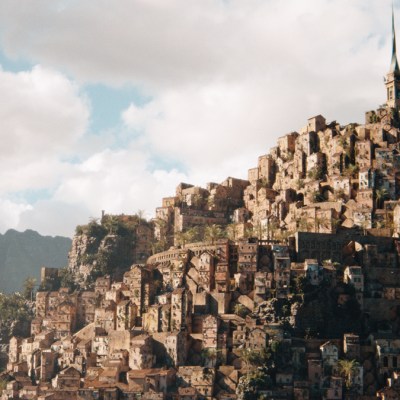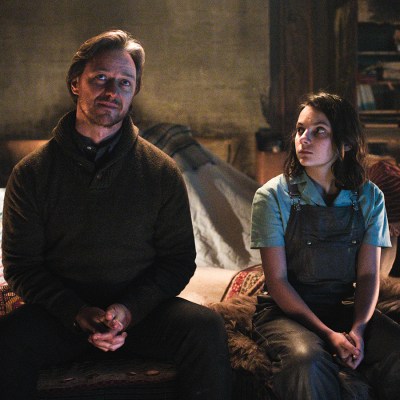His Dark Materials’ Spectres: ‘I Tried to Find a Way To Not Make Dementors’
The price of cutting between worlds and an allegory for mental illness, Spectres are central to His Dark Materials. VFX head Russell Dodgson and designer Joel Collins break down how the creatures evolved…
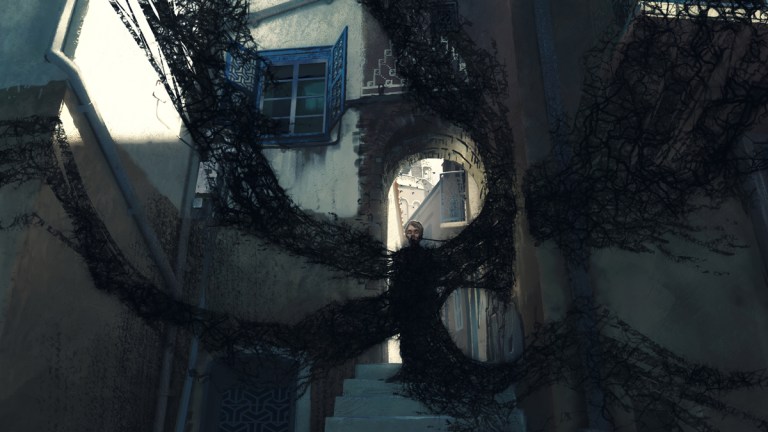
When Philip Pullman magicked up Spectres on the pages of The Subtle Knife, he did it without giving a thought to the VFX artists of the future. If Pullman had considered the puzzle he was setting the people tasked with depicting creatures so diaphanous that “in some lights, they were hardly there at all,” he may have had a rethink. Instead, not knowing that his story would be turned first into a feature film and then a stunning TV adaptation, he described monsters that were “a rhythmic evanescence, like veils of transparency turning in a mirror.” Tricky.
“In literary form, it’s a very different game,” laughs Framestore VFX Supervisor Russell Dodgson. “You can describe things that you can’t quite picture and that makes it more magical, but then you try and put it on screen and it’s like, oh! It’s such hard work. Our 3D VFX supervisor on that, Rob Harrington, has definitely gone greyer doing the Spectres.”
Monsters from the void between parallel worlds, His Dark Materials’ Spectres are created whenever a window is cut from one reality to another. They float around and swoop down indiscriminately on adults, feeding on their souls and leaving them as zombies. Only children are safe from attack.
Not Humanoid, Not Creature-like, Not Dementors
The team had long conversations about how to depict the Spectres. First, they ruled out making them humanoid. Production company head honcho Jane Tranter was clear that she didn’t want them to appear too creature-like. Dodgson was keen to avoid comparisons with another brand of fantasy monster from the Harry Potter universe.
“I was really trying to find a way to not end up making Dementors,” says Dodgson, referencing the Potterverse’s wraithlike, skeletal, cloaked creatures whose soul-sucking effect on their victims is remarkably similar to that of Pullman’s Spectres. (Harry Potter and the Prisoner of Azkaban was published two years after The Subtle Knife.)
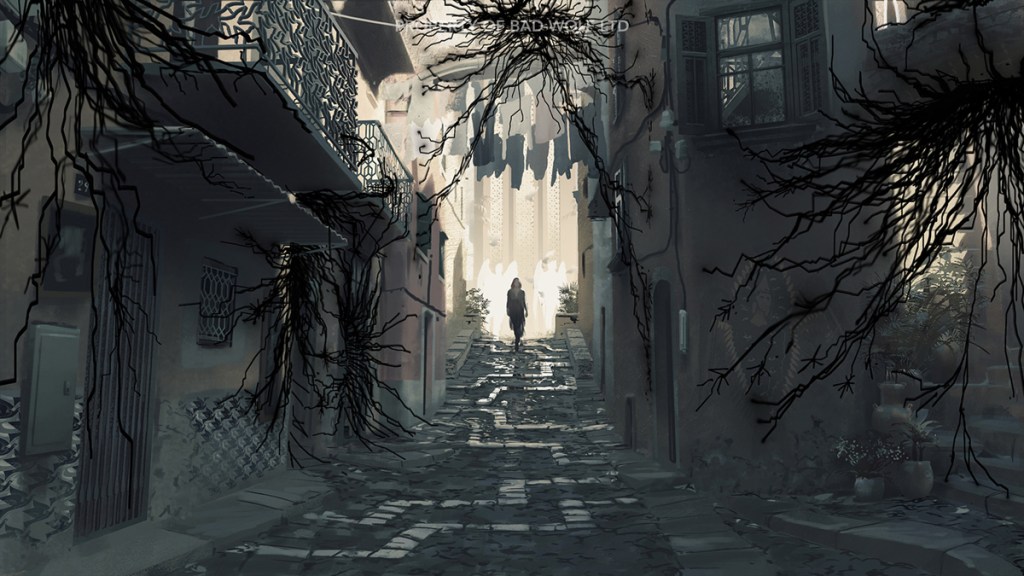
“There was a nice bit of concept work from Dan May at Painting Practice that was a bit Dementor-like, but more made of trails rather than being solid,” says Dodgson. Effects-driven monsters, he explains, are either computer-generated models or mathematical simulations. His Dark Materials’ daemons – also designed and animated by Framestore – are the former; Spectres are the latter. “They’re made out of maths, simulations that you apply rules to.”
“With the daemons, we make a really good-looking creature and it looks good in every shot, and it’s up to us to animate it. With FX monsters, you don’t have that luxury.” What Dodgson and his team see when they’re animating the Spectres is about as far from a rhythmic evanescence as you can go:
“We’ve literally got a moving sausage,” he laughs, and you can see the video below for proof. “Everything else happens because you’re telling the inside of the sausage to do one thing and the outside of the sausage to do something else. It’s massively unpredictable. We’ll put those numbers in and paint in some weighting, and on one shot it looks great and on the other shot it looks awful.”
That’s why you’re unlikely to have seen still images of the Spectres in any of His Dark Materials’ promotional material. Static, they don’t work as well as in motion, where they’re a menacing, writhing, otherworldly grey mass.
No Ordinary Monsters
The Spectres weren’t always grey. Early versions were transparent and white, but neither quite worked. They settled on black for a while, but Jane Tranter came back with the note that she wanted them to be grey. “Grey is good because it makes them more unique,” says Dodgson, “but there’s a reason people don’t do grey monsters a lot, and that’s because in different lighting conditions, grey becomes whatever colour the environment is, so that was a unique challenge but it was worth it.”
Another challenge came from Covid-19, which forced the production to shut down filming and eventually scrap a standalone episode which had been written to tell the story of James McAvoy’s (otherwise absent) character Lord Asriel in the second season. “They pulled the plug on it at the right time,” says Dodgson, “but one of the tragedies, and one of the hardest things for us with the Spectres, was that we had a sequence where the Spectres attack the town before everybody left.”
Plans for that lost episode meant more time had been spent designing the way the Spectres attacked – enveloping their victims and sapping them of their life force – than what season two eventually shows of them. “In the end, we have less of them attacking and more of them creeping. We’d spent time developing the way they move when they’re being quicker than slower, and then on a dime, we had to shift our design.”
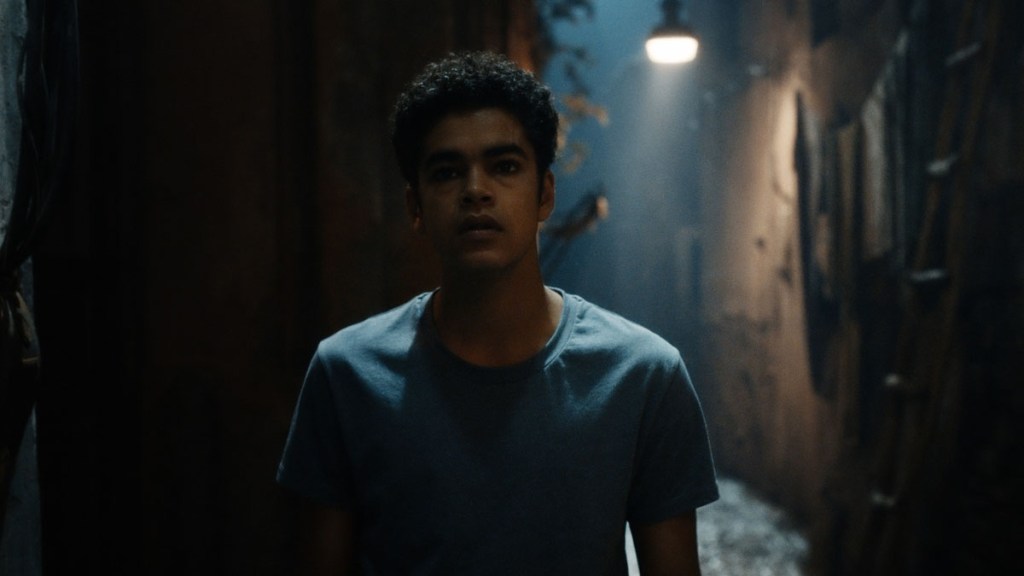
The Spectres’ style of attack is to wrap around their victim and absorb rather than fight, says Dodgson. “They drain you of your energy and your life. It’s not like a battle with a monster.”
What Spectres Mean
Spectres aren’t just any monsters, says production designer Joel Collins. “A Spectre is something half in the mind. It’s the anxiety of them as much as what they do. They’re a very complicated thing that come from the fabric and the tears between the worlds. They are the bad side of cutting between worlds. They’re the warning. They’re the price you pay.”
A Spectre is as much an allegory for mental illness as it is a fantasy creature, says Collins. “Or at least it relates to mental illness. In our world, you don’t see the Spectres. They manifest themselves in ways that are invisible but emotionally, you see people disturbed, upset, or they’ve had something taken away from them. They’re a manifestation of something you see in Cittàgazze, but in other worlds, you may not be able to see.”
Philip Pullman would agree. In this online Q&A from 2004, he told a fan that Spectres “were a way of talking about certain mental states such as depression and self-hatred.”
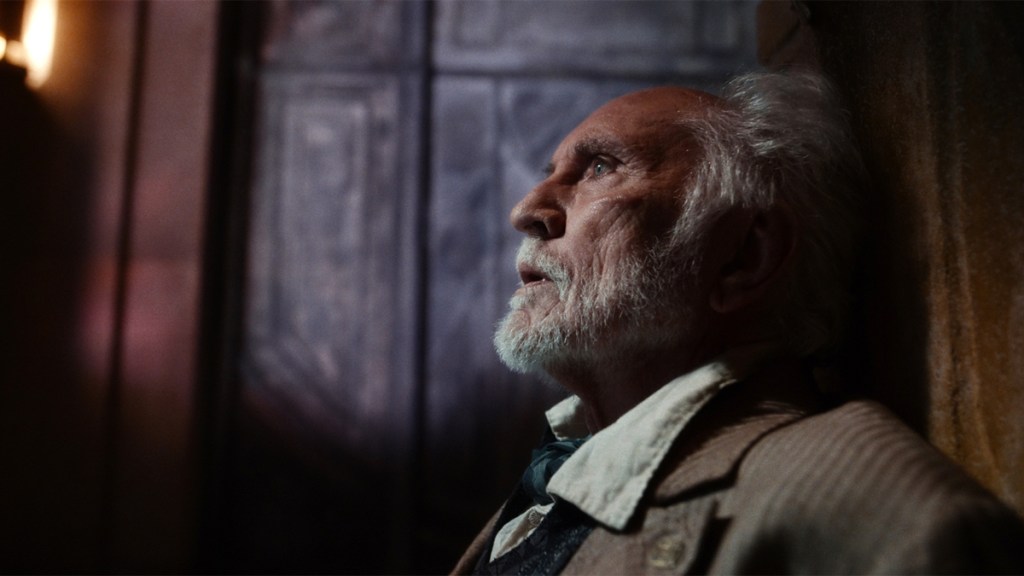
To Dodgson, the Spectres are a symbol of repression. They represent the psychological cost of living under a regime like the oppressive Magisterium. “In every world, there is something that oppresses you and takes away your spirit or crushes your soul or your freedom or your free will. In Lyra’s world, that’s the Magisterium, in Cittàgazze, that’s the Spectres.”
“That’s what I always say about the daemons,” he continues. “The daemons aren’t the point of the show, even though they’re one of the unique things about it, they’re just one of many ways of representing the connection a person has with their inner soul. In Cittàgazze, the connection that you see is the separation from that connection. When you get further on into the third book with the Mulefa, it’s about them and their connection with nature.”
The Mulefa. Now that’s an entirely different challenge sure to give the VFX team even more long conversations, late nights and grey hairs. Somehow though, just as they managed with the Spectres, they’ll find a way.

